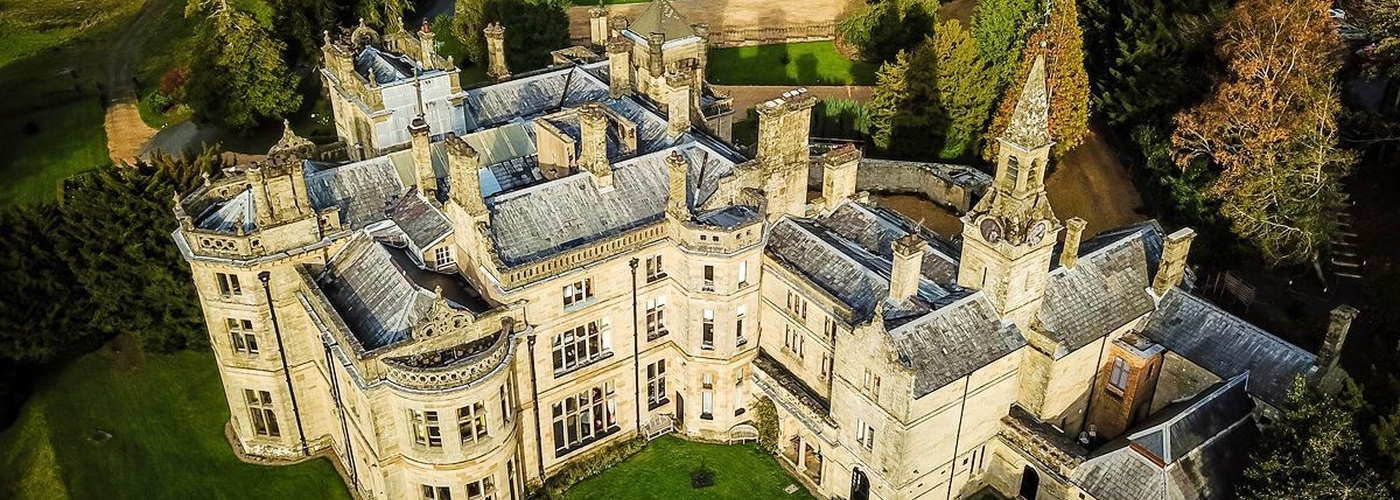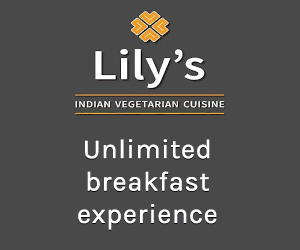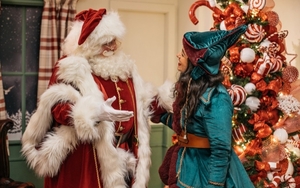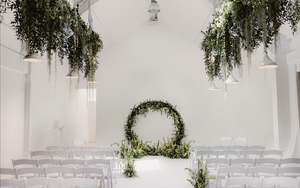Neil Sowerby and Captain Smidge take in one of Wales' most beautiful hotels
CAPTAIN Smidge, meet Sebastian Pedro. Two poncily monikered pooches engage in a courtly ritual of tail-wag and sniff on the terrace of a luxury hotel geared to their canine requirements. If dogs went in for "one-pupmanship" SP would have the bragging rights. He and his owner Amanda are billeted in the room Queen Victoria once stayed in, complete with the original bath she used. Churchill is named another famous visitor; bulldogs only in that baronial bedroom?
I’m sure Queen Victoria would have approved. Back in 1889, she was so enchanted she even changed her itinerary to extend her stay to 10 days.
Not that we are at all disappointed in Criccieth, our own dog-friendly "Grand Room" at Palé Hall. With its aquamarine colour scheme and glorious view up the Dee Valley, it’s the personal favourite of our server Nicholas, he tells us, as he pours our Polly’s Pale Ale. Cutting edge craft beer from Wrexham with a view of Victorian grounds it takes six gardeners to maintain? Magical.
We feel immediately pampered and refreshed after the 80-mile drive from Manchester. Time to explore our new home turf. There are 50 acres to go at. First up is the kitchen garden, the source of produce for the evening’s eight-course tasting menu from head chef Gareth Stevenson. The rest comes from a network of quality local suppliers he’s built up.
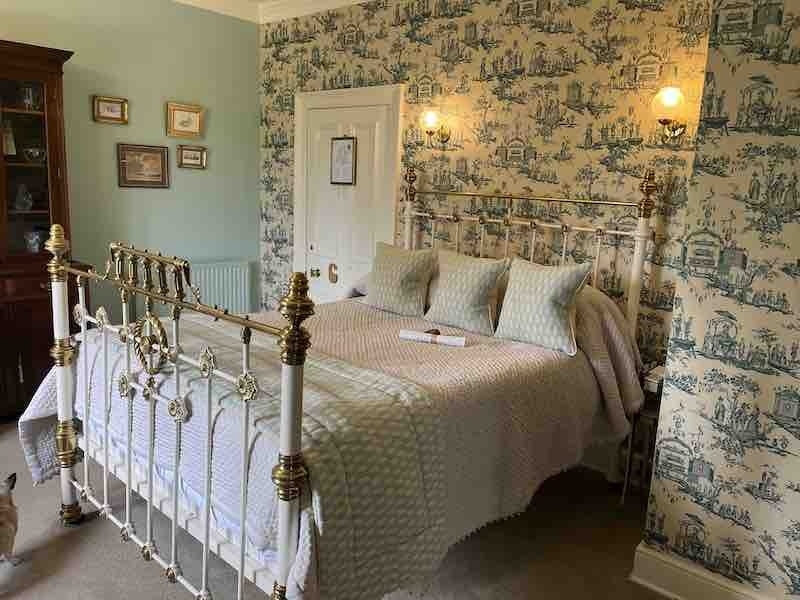

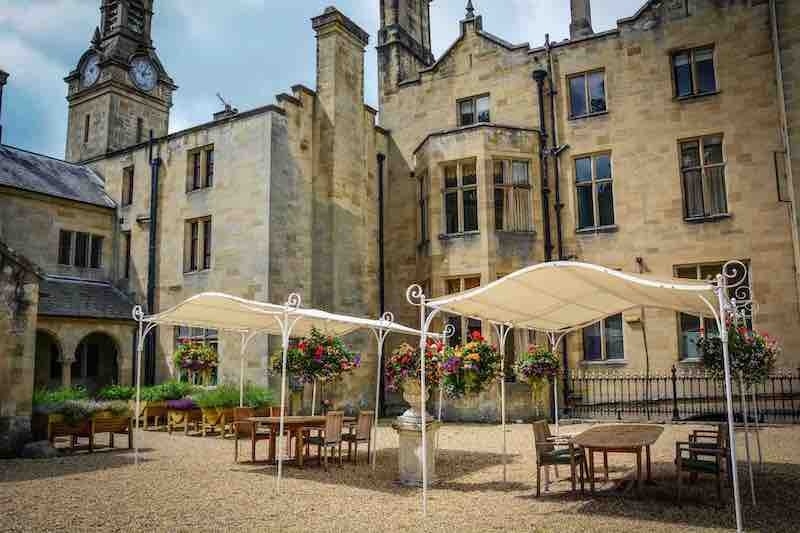
The AA Five Red Star hotel is a member of Relais & Chateaux and Pride of Britain, but I’m most excited by its Henry Robertson fine dining restaurant winning one of the 23 inaugural Michelin green stars in 2021, an accolade for sustainability also held by the likes of L’Enclume, Moor Hall and Where The Light Gets In.
It helps if you’ve restored the existing on-site hydroelectric plant for the 21st century. The team’s uniforms are made from recycled plastic, they create their own organic compost and make a huge effort to reduce their carbon footprint. And the hotel bulletin, Palé Times, informs me the garden squad have been out tapping sap from the estate’s silver birch trees "to be used in menu development."

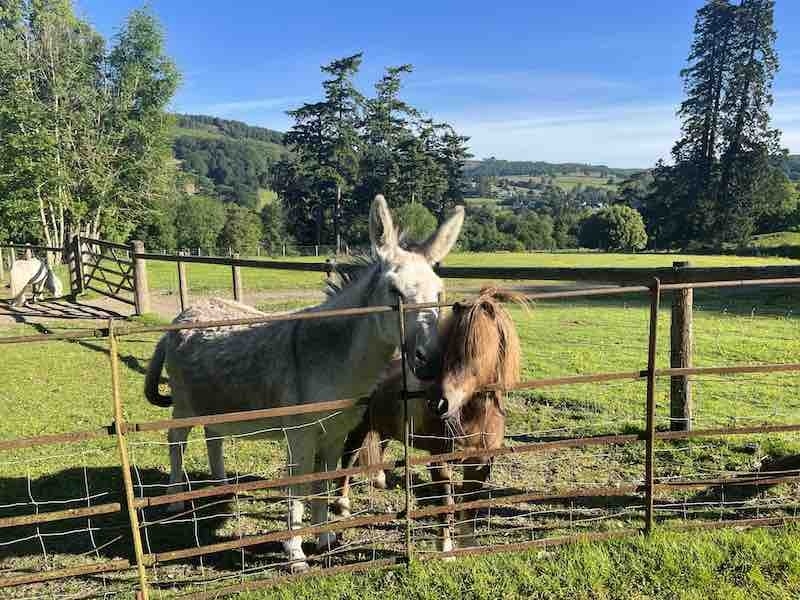
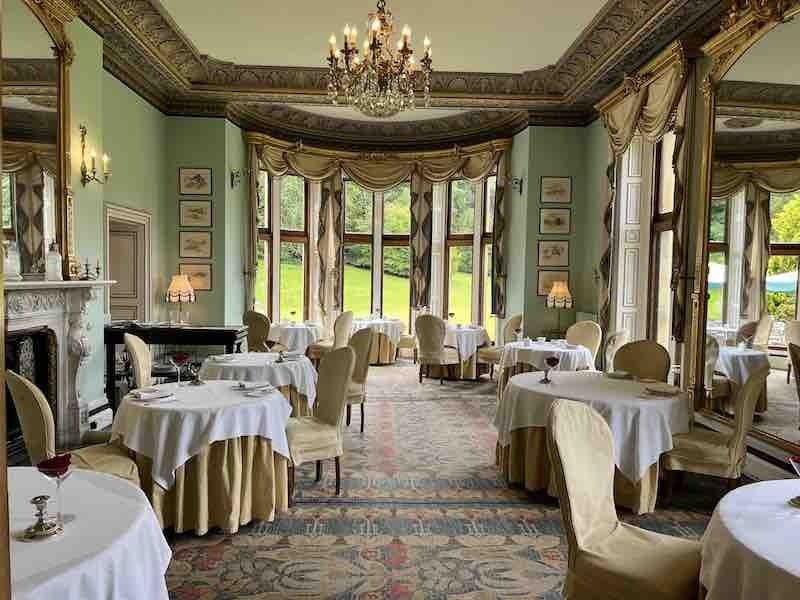
None of this impresses Smidge. Our Peter Pan of a chihuahua is eager to test the springiness of those (cue cliché) manicured lawns, bounding up the hill to the reed-fringed pond at the summit. We seek in vain for the promised damselflies, so swing around the edge of the rhododendron plantation to the paddock to greet Crunchy, Bertie, Jet and Bernie. The first three are Shetland ponies, Bernie the furriest of donkeys. The sign says "don’t feed". Our concierge has supplied an apple "to share", which Crunchy, living up to his name, wolfs on his own.
We linger longer over our tasting menu, a refined affair well suited to the setting of ornate plaster ceilings, chandeliers and vast sash windows. A barbecued red mullet in a Thai "tom yum" broth set the agenda of delicately structured dishes packing surprisingly big flavours. It may be fanciful but I do detect the influence of Gareth’s mentor, Michael Caines, who curated the food offering when Palé Hall reopened.
The only disappointment is the absence as a menu choice of the advertised rabbit terrine. Delivery hitch. Ironic, as the sun went down, that dozens of the wild kind were scampering across the lawns outside. Smidge had only joined us for canapés in the bar beforehand; perhaps as well he missed the bunnyfest.

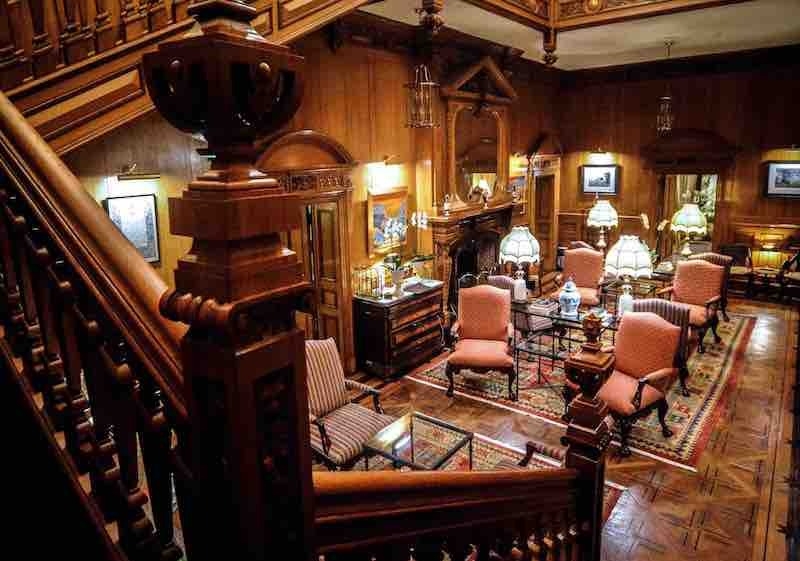
That dining room is named after Henry Robertson (1868), a Scottish railway engineer, entrepreneur and Liberal MP, who lucratively diversified into steel after another Henry, Bessemer, revolutionised production with his new, much cheaper method.
Palé Hall was completed in 1871 as a state-of-the-art country residence in Robertson’s adopted North Wales. No expense was spared. It is described by the Listed Buildings Register as displaying an "eclectic Jacobean style". Which is what gives it a charm sometimes absent from High Victorian piles. And, of course, it helps to have such sympathetic restorers as Alan and Angela Harper, who bought the run-down property in 2015. They closed it for almost a year to secure and enhance all the original features and fill it with their own artwork and antiques. To fit their plan of a grand yet surprisingly intimate hotel. Yes, the panelled entrance hall and public rooms impress mightily, but they don’t daunt.
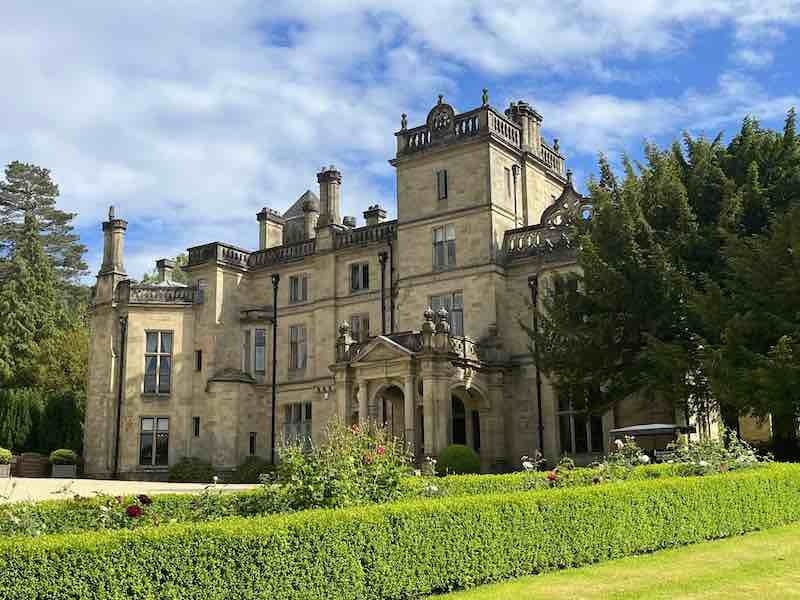
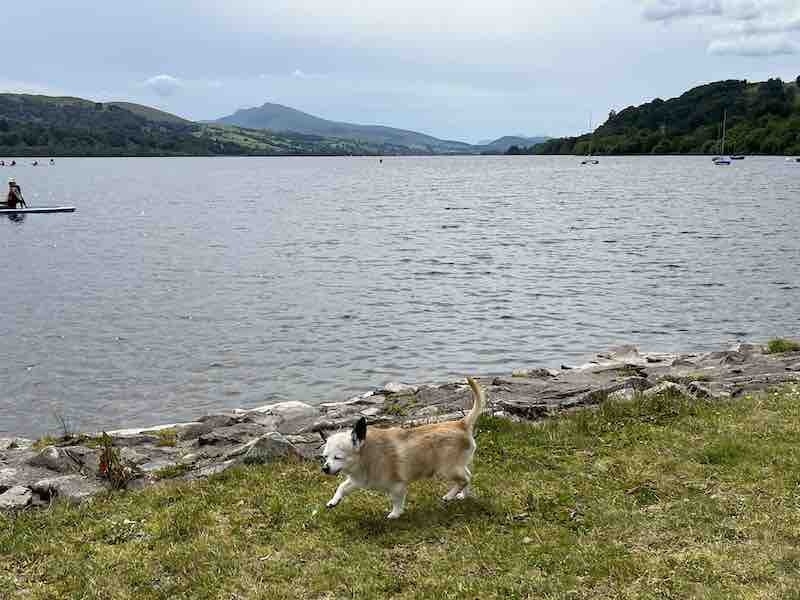
The difficult decades are clearly behind Palé. After passing from family ownership, it was used as a military hospital during the First World War and as a nursery school in the Second. For 20 years the great house lay empty, its 32,000 acres of estate of value mainly for shooting rights. The hotel website recalls 18 electric fires were left burning in the abandoned rooms thanks to the aforementioned electricity supply generated by water turbine. Without this, the original plaster ceilings and woodwork might have perished. Even so, a later hotel project ended in receivership and a serious state of disrepair. Hard to credit now as we settle into Criccieth, sampling our complimentary homemade biscuits and tot of the Welsh equivalent of Bailey’s, tickled by the discovery our smart TV is concealed inside a mirror.

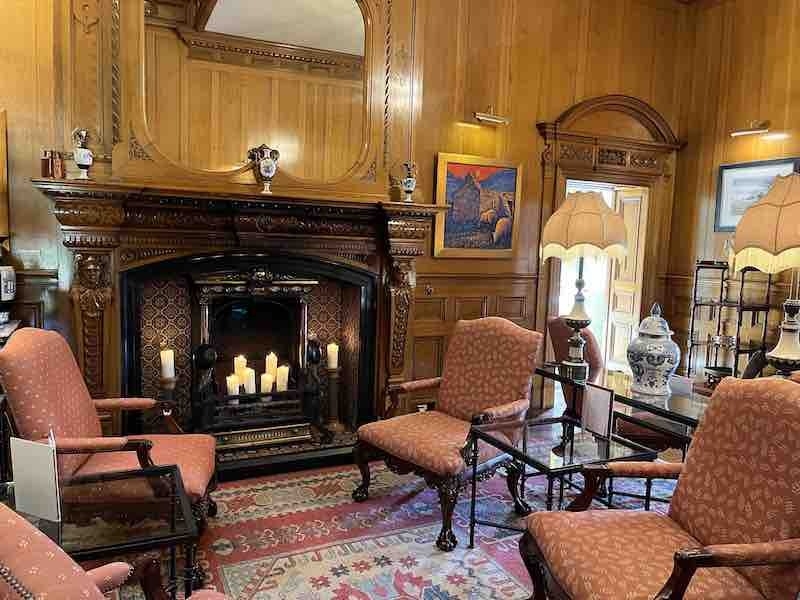
I’m sure Queen Victoria would have approved. Back in 1889, she was so enchanted she even changed her itinerary to extend her stay to 10 days. The room she chose as her bedroom was the only one in the house that provided a bathroom with plumbing. The half tester bed in situ today is believed to be the same one she slept in, while the original bath and basin remain, now complemented by a separate shower and marble tiles.
Queen Victoria was a committed dog lover. From the age of 13 when she was given Dash the King Charles Spaniel as her first pet, to 1891 when she showed six of her Pomeranians at the first Crufts she was never without canine companionship. She would have approved of the current hotel dog policy.
Where to go with Palé Hall as your base
You and your pooch could pay homage to Victoria by following the easy Queen’s Walk along the adjacent River Dee. To stretch our legs more (Smidge got carried for the uphill sections) we opted for the more spectacular Precipice Walk 20 miles south west off the A494 towards Dolgellau. There’s a free car park at the start of the well-signposted trek. We didn’t have time for the full circuit rising to 750ft above sea level but the bank of Llyn Cynwch reservoir was a lovely section, followed by a steep ascent to get a panorama of the Mawddach river.
The Palé Hall concierge recommended The Mawddac Trail, following a former rail line along the estuary between Dolgellau and Barmouth. Alternatively, you could tackle a certain Mount Snowdon 35 miles to the North West. At 3,560ft it is Wales’ highest mountain; expect a hike of between five and seven hours to the summit and back. Or you could wimp it by booking the 4.7-mile rack and pinion railway to the top.
Less spectacular but very charming is the little steam train (Alice or Winifred) that chugs the nine-mile return trip along the shore of Lake Bala. Rheilffordd Llyn Tegid operates in the summer months. From it, you can watch the kayakers, windsurfers and stand-up paddleboarders who hire out of the sports centre south of Bala town.
The large glacial lake is also home to the endangered gwyniad, a small whitefish found only in this lake since the last Ice Age, 10,000 years ago. That should not be on your "bucket list" if you took advantage of one of Palé Hall’s coarse fishing packages, which can include the lake. For the experienced fly fisher, the Dee and tributaries specialise in grayling, trout and, in brief season, salmon. The Hall’s local ghillie offers fly fishing lessons, tuition and guidance for all levels.
If, after a hard day of water sports or angling, refreshment is required Bala’s long High Street is full of pubs. My recommendation would be Stori bottle shop and taproom at 101 – the source of Palé’s surprising Pale. There’s a comprehensive range of drinks to choose from but my recommended go-to is the local Geipel. It’s always on there, witnessed by the discreet illuminated sign in the window.
Erik Geupel (sic) is the brewer of this range of authentic lagers (bottom-fermented beauties, not the bland commercial dross). For nigh on a decade, each week Ohio-raised Erik has commuted from the family home in Didsbury to brew at his mountain cottage 10 miles north of Bala. Everything brewed in his barn adheres to the German beer purity rules, the Reinheitsgebot. In Bala, a glass of his stunning Bock in hand, we toast Queen Victoria: “God bless you, Ma’am, and your choice in country houses!”
Palé Hall Hotel & Restaurant Palé Estate, Llandderfel, Bala, Gwynedd LL23 7PS
Named Wales' Leading Hotel in the 2021 World Travel Awards. 18 rooms, seven of them dog-friendly, as are four separate Garden House suites. An overnight stay costs from £245 for two sharing a Classic Room, including breakfast. There’s a £25 a night extra charge for your dog.
The Henry Robertson restaurant offers tasting menus (five courses for £80, eight for £95), while the more casual Huntsman offers two courses for £45, three for £50.
Follow Neil Sowerby on Twitter @antonegomanc
Read next: 33 things to do with your kids for summer hols in Manchester
Read again: Basel, Switzerland: 'Art with a capital A'
Get the latest news to your inbox
Get the latest food & drink news and exclusive offers by email by signing up to our mailing list. This is one of the ways that Confidentials remains free to our readers and by signing up you help support our high quality, impartial and knowledgable writers. Thank you!






